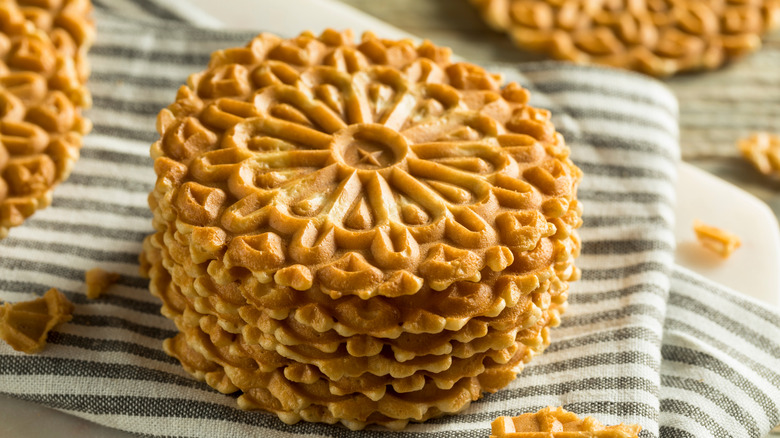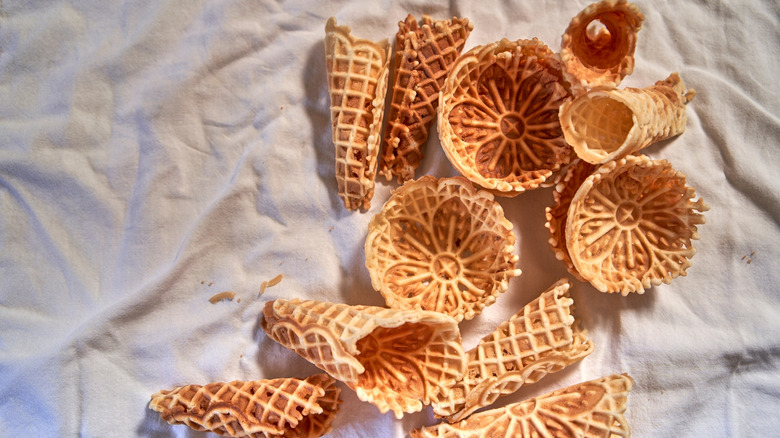Pro Tips For Making The Perfect Pizzelle Every Time
Thin, crispy pizzelle are traditional waffle-like Italian cookies that are customarily made around Christmas, as well as for other holidays and celebrations. As more people have discovered these light and tasty cookies, more home bakers have been trying their hand at making them, but getting the hang of the process can take time. Dennis Littley, chef and recipe expert at Ask Chef Dennis, told Food Republic that making these cookies "requires practice and patience," but he had some tips to help your pizzelle turn out perfect every time.
The batter is straightforward, made with eggs, sugar, flour, oil or butter, and flavoring, traditionally licorice-tasting anise seed or extract. When this batter is ready to go, Littley said to make sure the electric pizzelle iron — which looks like a waffle maker — is preheated to the correct temperature (according to the manufacturer's directions) and lightly greased. If the iron isn't hot enough, the pizzelle won't cook properly and may stick. The iron can be greased with oil, shortening (like Crisco), or cooking spray, and even non-stick pizzelle makers can benefit from greasing.
Use about 1 or 2 teaspoons of batter for each pizzelle (experiment to see what amount works best). Littley advised dropping it slightly off-center on the pizzelle form so it spreads evenly when you close the top. Cooking times range from about 30 to 90 seconds, depending on your machine. To avoid burning the pizzelle, Littley said to take them out just when their edges turn golden. Letting each one cool before stacking it on top of the rest will help it stay crisp.
Ways to serve and flavor pizzelle (plus some history)
Pizzelle are delicious on their own or sprinkled with powdered sugar. You can also roll them into cones or a cannoli shell and fill them with pastry cream, cannoli filling (which is made with ricotta and/or mascarpone cheese), Nutella, or jam, or put ice cream into pizzelle bowls. Chef Dennis Littley warned to be careful handling the pizzelle once they're done, saying they can break if you don't let them cool a little and firm up. However, if you're going to roll them, you must do so right after they come off the iron, so be gentle. You could also make smaller 3- or 4-inch pizzelle instead of the regular 5-inch and sandwich a filling between two of them.
While pizzelle are traditionally flavored with anise, the same flavor of the trendy Middle Eastern liquor known as arak, you can use other flavors, too. Some popular ones include vanilla, almond, lemon, and chocolate, made with extracts, citrus zest, or cocoa powder.
Pizzelle originated in central Italy's Abruzzo region, one of Giada DeLaurentiis' favorite food destinations. Although they're generally made with electric pizzelle makers now, they were traditionally made with a long-handled iron press that was put on a stove burner (or originally over a kitchen fire). The iron was held during the entire process and manually flipped halfway so both sides of the pizzelle cooked. Just like the modern electric machines, traditional irons had a pattern that imprinted on the cooked pizzelle. The center often featured a family monogram or crest, an important date, or some other design.


